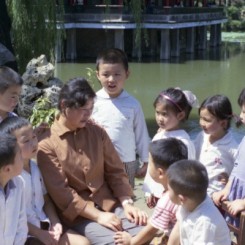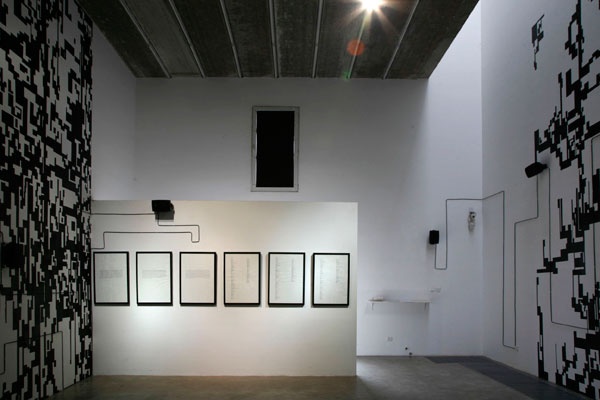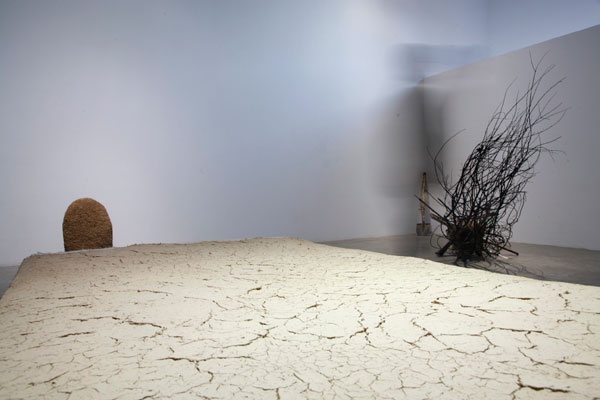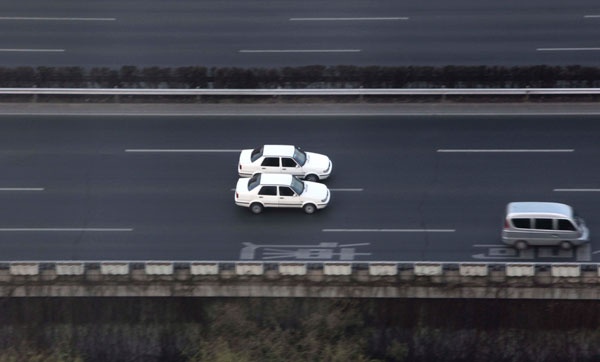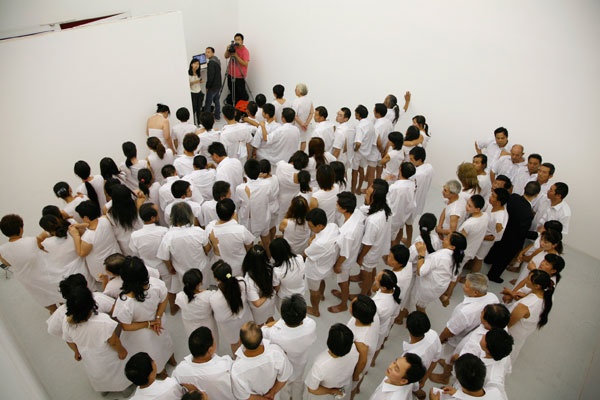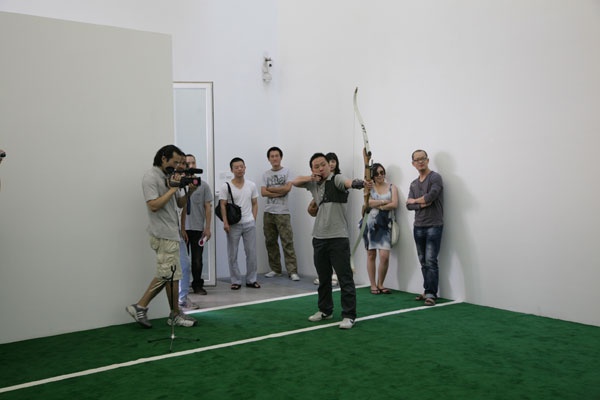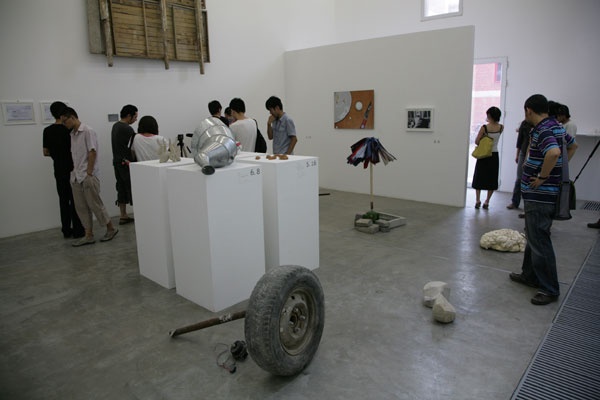‘A series of numbers, but not a game’ is how co-curator and participating artist Su Wenxiang opened his essay on Taikang Space’s ‘51m2’ project, which unfolded from October 2009 to January this year. Does a series of numbers necessarily connote a game? The title is a number, and each of the 16 artists’ individual exhibition projects was tagged sequentially with their name and #1, #2, etc. Unless Su is deliberately trying to instil the idea of a game by negating it in his first sentence, the use of numbers to label this series is strategic. Games involve strategy, but strategy does not guarantee the presence of a game. This numerical approach articulates a strategy alternative to the classic curatorial one that creates an abstract organising concept to provide a legible (or not, as the case can be) framework for the works on show. 51m2’s curators avoided any overriding narrative beyond that of promoting the work of young artists (‘young’ not only in the literal sense of age but also of emergence for artists who haven’t exhibited widely before) and Taikang’s mission as an art space. Thus, the series aimed at once to deliver a sense of how and which individual artists are at work now, and what Taikang Space is doing and staying attentive to; two layers. Of course, this is what most exhibitions convey, but Taikang’s introduction describes it explicitly. The use of a numbering system and omission of a lettered title is designed to cancel the intrusion or distraction of a concept and eliminate curatorial direction. The name 51m2 is therefore not ‘inert’, as Su Wenxiang suggests in his text, but weighted with the goal of straightforwardness, and conspicuous by its presence.
Aside from its a-curatorial stance as title, the designation of 51 square metres as a physical, uniform area is something that bears exploration. It seems that in order to push the envelope of display for contemporary art, Taikang resolved to use a spatial envelope through which to push a particular set of artists. The measurement at the same time represents freedom and restriction; as a ‘platform’ for the art and Taikang’s mission, it appears as a free area giving artists the opportunity to use it as they wished for a set period of exhibition time (usually about 2 weeks) — in Su Wenxiang’s words, ‘an authentic and nurturing space.’ On the other hand, it could also be interpreted like confinement, the explicit size perhaps conjuring associations with cells. One could then go so far as to call the recurrent occupation of the space by successive artists as a form of ‘positive imprisonment’ by the gallery. But the connotations of numbers and measurements have earned too cool a cachet in the art world for this to be the first thought. Just as the word ‘space’ replaces ‘gallery’ in many cases, so the denouncement of words in favour of digits and units has gained popularity; in Shanghai, for example, there is the 1918 Space, m97 Gallery and the now-defunct ‘140sqm’ gallery. These names ease the canonical load of the established system and its terminology by making it sound more scientific and less self-consciously ‘worded.’ The designated floor area is also relevant in terms of the recent growth in experimentation with exhibition methods; as a recurring box refilled 16 times by different artists for near-equal time periods, the overall shape of Taikang’s project is of a regular grid: 16 boxes, 4 x 4. This contrasts with Platform China’s organic approach for ‘Jungle’ last year, for example, which displayed a much larger and more disparate group of artists in a show (in the words of the exhibition text) ‘whose structure resembles that of an ecosystem’. In short, the repeated partitioning of time and space in 51m2 is a concept that might justify more focused philosophical and critical discussion than there is written space for here.
It was Xin Yunpeng who intervened most overtly in the space given. Although it corresponded perhaps too directly in form — a white space confounded by planar interventions that are physically uncomfortable for the visitor — to what He An made at Magician Space (‘I believe someone will take me there, but let’s leave it for tomorrow’, 2010), this work was memorable. For exhibition #8, Xin gave the space a new ceiling — a gyrating, tilting plank set at the artist’s height; on the floor in a corner lay an i-pod and two small speakers emitting the recorded sound of phone calls Xin made in which he said nothing when the recipients picked up the phone. The minimal accompanying text simply says that by these means Xin was able to assemble the audience at one point ‘thus making us reflect on our right/political space and its governing rules.’ With a limited area and time to introduce and realise the show, this piece was strong in the way it commanded such physical authority over 51m2, filling it completely and refusing to be either constrained or made awkward by it. In contrast, Liu Chuang’s conceptual #13, an installation of an air conditioning unit dribbling water and a video piece, comes to mind as maybe less suited to the conditions.
It was Pei Li who rendered 51m2 as a potent emotional space: somewhere to recognise and work through a sense of loss born of her grandfather’s sudden abandonment of the Bonsai trees he had tended for 20 years. ‘In this work,’ she said, ‘I (forced) each visitor into my space of stillness and melancholy.’ The tree stumps sat dead and alien-like in a shallow rectangular pool of black liquid, sharing it with speakers playing electronic sounds. Walking on grey paving stones around this staging of departed life and extinguished commitment was certainly an absorbing experience. Interestingly, Pei Li also chose to lower the ceiling of the space, pressing the audience into the visceral environment she instilled there. The performance-opening of Ma Qiusha’s project (#12) was contrastingly tense and highly strung. In it, 100 people were assembled in the space wearing white cotton clothes that were all stitched together. The performance saw each person tear away from the group to escape to another room. Spectators could either watch them going past through a glass door, or see the whole process playing out on screens outside. Another variation arrived with #7, Hu Xiangqian. Here, the witty Guangdong artist chose to use the allotted area only as a site to display a video documenting an absurdist performance – in which he used his own body as a ‘museum’ to challenge the dominant systems and power of museums — on the grass outside Taikang Space on the opening afternoon. In this case, then, the action contained within 51m2 was residual – secondary to actions that happened outside it.
The theme of time also entered the projects. In a spontaneous vein, Lu Zhengyuan set himself the task of creating something every day according to a ‘compulsory schedule’, thus mimicking the temporal frame of ‘51m2’. The results — occurring mainly from instances of interaction with objects and materials from his daily life — were variously inventive (a sculpture made from chicken wings), organic (body hair and dirt), and surreal (a shoe swallowed by a knot of Styrofoam). A product not of the urban but of old cycles, heavy seasons and the use and decay of materials was Yan Bing’s project that brought powerful natural presences into the space in the form of mud and bucolic detritus, reformed into an abstract ‘Construct’, for example, and made totemic as a shovel bound in hemp. Time also arose in a discussion about the project between six of the artists in June 2010. Zhao Zhao commented that he had hoped for a program less ‘planned’ and more fast-paced; on the other hand, Zhao Yao felt that sufficient time to ‘process’ each project following its exhibition was lacking. Was the format in fact too safe? Su Wenxiang asked.
The question, however, is arguably not whether or not the project was finally ‘too safe’ (a subjective judgement), but whether it succeeded in generating such questions. ‘51m2’ was without doubt designed to assert Taikang Space’s new premises in Caochangdi; indeed, perhaps a study of the first major shows designed for new or refurbished gallery spaces would give a productive impression of what, in the present moment, is felt to have real impact, to cement the identity of a space. It is not as yet clear what the imprint of ‘51m2’ will be or how it will develop; attitudes now may be roughly divided between seeing the project as a brave experimental exercise with a refreshingly straightforward diction, and those who found it overly compacted – too much like a batch of contemporary artists in a nutshell. This article aims to point up these kinds of responses rather than to posit fixed opinions. As a project aiming to integrate art, time, space and idea systematically and apparently without much curatorial ado – and whether successfully or not – ‘51m2’ opens lines of questioning that are most positive in the sense that they are far from being resolved soon.



